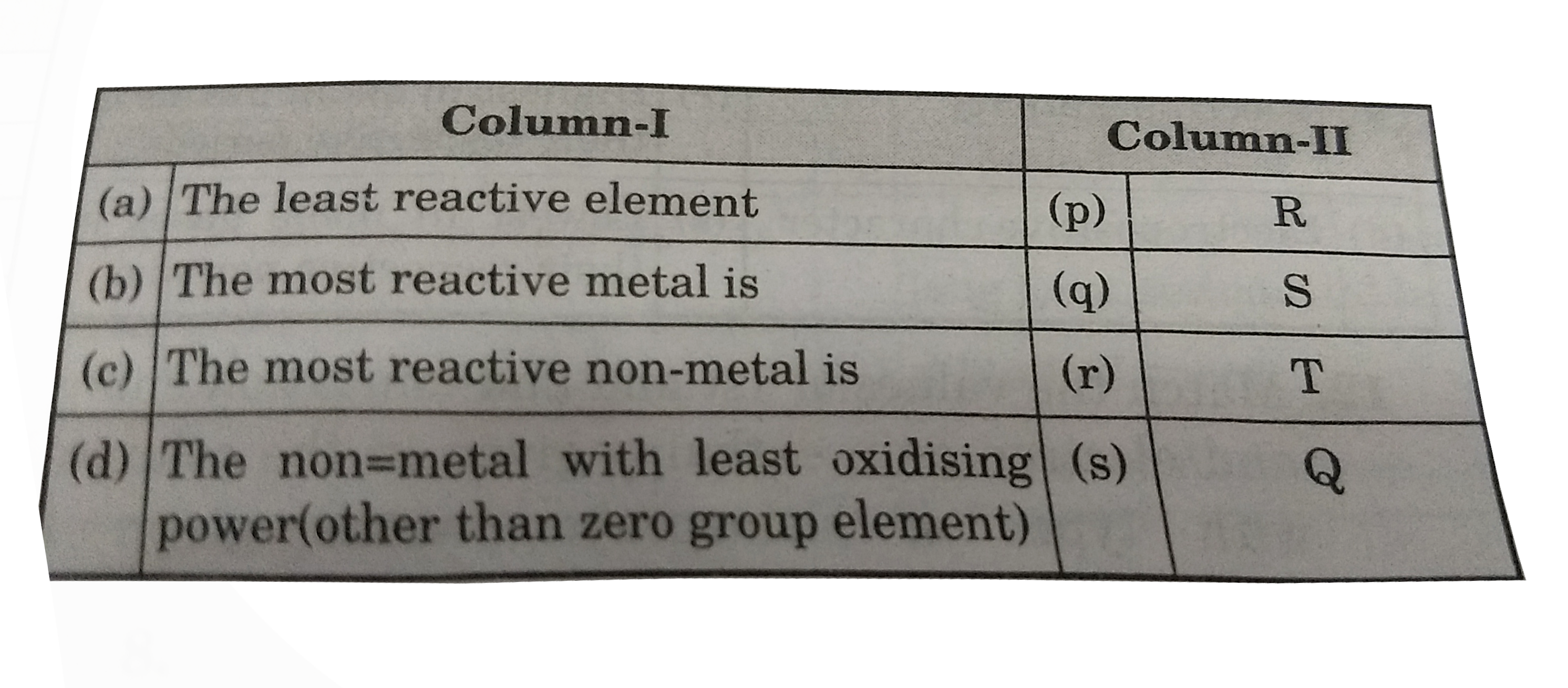The first (ΔiH1) and second (ΔiH2) ionization enthalpics (in kJ mol−1) and the electron gain enthalpy (ΔegH)( in kJ mol−1) of the elements I.II,III, IV and V are given below

The most reactive metal and the least reactive non-metal of these are respectively
I and V
III and II
II and V
IV and V
The correct Answer is:C
I represents Li, II represents K
III represents Br, IV represents I
V represents He
So, amongst these, II represents most reactive metal and V represents least reactive non-metal.
Topper's Solved these Questions
Similar Questions
The first (Δi,H1) and the second (Δ,H2) ionisation enthalpies (in kJ mol−1 ) and the (ΔegH) electron gain enthalpy (in kJ mol−1 ) of a few elements are given below :

Which of the above elements is likely to be :
the least reactive element?
View SolutionThe first (ΔH1) and second (ΔH2) ionisation enthalpies (in kJmol−1) and the (ΔHeg) electron gain enthalpy (in kJmol−1) of a elements are given below:

Based on the above information match the following columns.

View Solution
Knowledge Check
The first (ΔiH1) and second (ΔiH2) ionization enthalpies (in kJ mol−1) and the electron gain enthalpy (ΔegH)(in kJ mol−1) of the elements I, II, III, IV and V are given below

the least reactive non - metal and the most reactive metal of these are respectivelyAIV and VBII and VCV and IIIDV and IIThe first (ΔIH1) and second (ΔIH2) ionisation enthalpies (in kJ mol−1) and the (ΔegH) electron gain enthalpy (in kJ mol−1) of a few elements are given below:

The least reactive element is :APBQCRDTIonisation enthalpy (ΔiH kJ mol−1) for the elements of group 13 follows the order.
AB > Al > Ga > In > TlBB < Al < Ga < In < TlCB < Al > Ga < In > TlDB > Al < Ga > In < Tl
The first (ΔH1) and second (ΔH2) ionisation enthalpies (in kJmol−1) and the (ΔHeg) electron gain enthalpy (in kJmol−1) of a elements are given below:

Based on the above information match the following columns.

View SolutionThe first (Δi,H1) and the second (Δ,H2) ionisation enthalpies (in kJ mol−1 ) and the (ΔegH) electron gain enthalpy (in kJ mol−1 ) of a few elements are given below :

Which of the above elements is likely to be :
a reactive metal
View SolutionIonisation enthalpy (ΔiH kJ mol−1) for the elements of group 13 follows the order.
View SolutionIonisation enthalpy (ΔtHlinkJmol−1) for the elements of group-13 follows the order
View SolutionIonisation enthalpy (ΔtHlinkJmol−1) for the elements of group-13 follows the order
View Solution
